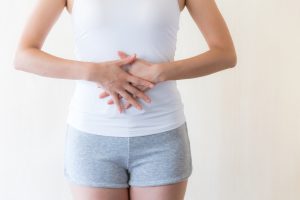Medical Features
Local experts share advice and updates
To view as a PDF, click here.
 As the summer winds down, it’s time to take stock of your health. To help, we checked in with three local physicians to learn more about topics that are top of mind with our readers.
As the summer winds down, it’s time to take stock of your health. To help, we checked in with three local physicians to learn more about topics that are top of mind with our readers.
For parents of young children, Dr. Jennifer McDonald from Children’s Hospital of Philadelphia offers tips for pesky preschool illnesses — conjunctivitis, lice, and hand, foot and mouth disease. Dr. Alhambra Frarey from Planned Parenthood of Southeastern Pennsylvania reviews and updates contraception methods, including several currently in development. And Dr. Steven Applebaum from Suburban Hospital explains the hot topic of gut health and the microbiome.
Here’s to your health!
Child Care and Preschool Illnesses: What You Should Know
When sharing doesn’t always mean caring
Jennifer L. McDonald DO, FAAP,
CHOP Primary Care, West Grove

Sending your child to daycare or preschool is one of the most difficult decisions a parent can make. Families know high-quality early education and child care for young children improves their physical and cognitive wellbeing. Currently in the United States, there are over eight million children attending daycare and preschool centers.
And yet along with that child care choice comes an increased exposure to illness, commonly known as “daycare germs.” It’s very normal for young children to experience six to 12 infections in just their first year of child care. While these exposures and illnesses play an important role in shaping your child’s immune system, frequent sicknesses can also be frustrating.
It’s helpful to know what to look for. Here are a few tips for some of the peskier daycare and preschool illnesses.
Conjunctivitis
One of the most common daycare illnesses is conjunctivitis, commonly known as “pink eye.” It’s identified by redness and swelling of the inside of the eyelids and the tissue covering the white part of the eye.
There are several causes of conjunctivitis, including bacteria, viruses, allergies and chemicals. Most of these conditions result in red or pink eyes that may be itchy or painful. Other symptoms include drainage from eyes, crusting of eyelashes, excessive tearing or sensitivity to light.
It may be difficult for your doctor to differentiate between the multiple causes of conjunctivitis. The type of conjunctivitis a child has will determine its contagiousness and treatment. Bacterial conjunctivitis is common in daycare and preschool settings and can be spread by hands in direct contact with drainage from an infected eye or by touching contaminated surfaces.
Most children with conjunctivitis improve without medication, but antibiotics may shorten the course of infection. Good hand hygiene as well as sanitizing objects commonly touched by kids’ hands and faces are the best methods of controlling the spread of conjunctivitis. Washing linens (remember the pillowcases and their favorite stuffed animal) and clothes is one of the best ways to keep pink eye under control in your home.
Head Lice
Head lice is a common daycare occurrence that can be difficult to control. Lice are tiny insects that live among human hair and feed on blood from the scalp. You may either find live lice or their eggs (nits) on your child’s scalp. Sometimes the nits are hard to see and are often confused for dandruff.
Lice bites can make your child’s scalp irritated and itchy and can result in frequent scratching, which may ultimately lead to scalp infection. Unfortunately, head lice are easily spread from person to person, especially in the child care setting. Most cases occur from sharing bed linens, hats, hair brushes and combs.
Parents can — and should — check for lice at home when their child has an itchy scalp. Lice will frequently be discovered on the scalp, behind the ears and at the nape of the neck. The best way to check is to use a fine-tooth comb on wet and conditioned hair, checking the scalp and hair in sections.
Head lice can be treated by removing them by hand or by using medication. Your doctor may recommend an over-the- counter shampoo, but for some resistant cases, an oral medication might be warranted. It’s always important to follow the directions carefully when treating your child for lice, and consult your physician for any concerns.
To get rid of head lice and their eggs, and to help prevent them from coming back, follow these simple tips:
- wear long hair up in a ponytail or bun,
- wash all items in contact with your child’s head (bed linens, stuffed animals, clothing) in very hot water and then put them in the hot cycle of the dryer, and
- vacuum carpets and upholstered furniture and then throw away the vacuum bag.
And remember to check all members of the family for lice and treat when appropriate!
Hand, Foot and Mouth
Although the name sounds strange, hand, foot and mouth disease (HFM) is a common childhood viral illness that’s frequently found in child care centers. It’s caused by multiple viruses, but predominately is a result of coxsackievirus infection.
The symptoms of HFM include fever, sore throat and runny nose, but also feature a rash with tiny blisters that might appear on multiple parts of the body — gums, back of throat, inner cheeks, palms of hands, soles of feet and buttocks, to name a few. From the time a child is exposed to the virus, it can take anywhere from three to six days for the first symptoms to show up.
There’s no specific treatment for HFM illness, but home care includes fever and pain control as well as avoiding dehydration by increasing fluid intake. Symptoms are worse (and children are most contagious) in the first few days of illness but generally improve over a week. On occasion with some HFM illness, children may experience peeling of the skin of the fingers and toes and even losing fingernails or toenails.
HFM is primarily spread to others through direct contact with infected respiratory droplets. The best prevention is to teach your children to cover their mouths and noses when sneezing or coughing and to wash their hands after using tissues or having contact with droplets.
Toys or other objects (toothbrush, eating utensils, etc.) that may have come into contact with your child’s saliva should be cleaned and sanitized. Disinfecting surfaces that your child touches frequently and minimizing kissing and sharing cups may be helpful to prevent another family member from getting the virus.
So, if it seems like your daycare child or preschooler is getting sick all the time, it’s because they probably are. And that’s OK. Teaching your kids from an early age about the importance of hand washing will help your family fight the battle against daycare germs.
 Jennifer L. McDonald, DO, FAAP, is the Medical Director of CHOP Primary Care, West Grove. Dr. McDonald attended medical school at Philadelphia College of Osteopathic Medicine and completed her residency in pediatrics at AI du Pont Hospital for Children/Thomas Jefferson University before becoming an attending physician in pediatrics at Children’s Hospital of Philadelphia in 2005. Her areas of expertise include breastfeeding, newborn care and sports medicine. CHOP.edu.
Jennifer L. McDonald, DO, FAAP, is the Medical Director of CHOP Primary Care, West Grove. Dr. McDonald attended medical school at Philadelphia College of Osteopathic Medicine and completed her residency in pediatrics at AI du Pont Hospital for Children/Thomas Jefferson University before becoming an attending physician in pediatrics at Children’s Hospital of Philadelphia in 2005. Her areas of expertise include breastfeeding, newborn care and sports medicine. CHOP.edu.
Contraception
Updated information for contemporary medical practice and patient options
Alhambra Frarey, MD, MPHA
Planned Parenthood of Southeastern Pennsylvania

“What is the optimal number of children to have?”
Since 1978, according to Gallup polls, Americans estimate the ideal number of children to have in a family at about 2.7. To achieve that result, the person who will have those children must spend a total of about three years trying to become pregnant, pregnant and postpartum. While three years may seem like a long time, that leaves an additional 30 years when that person needs to prevent pregnancy.
The good news is that modern contraception is very effective. The 68% of people who consistently and correctly use contraception account for only 5% of unintended pregnancies. Consequently, contraception represents a contemporary success story.
There is, however, recent evidence indicating that contraceptive counseling by healthcare providers in some cases may be biased due to patient age, race or socioeconomic status. As a consequence, patients may end up avoiding much-needed contraceptive care. With this knowledge, physicians must focus on listening to our patients, especially those who have historically been underserved.
Healthcare providers should start with patient-centered counseling. Successful contraceptive practice requires that physicians fully appreciate the unique circumstances facing each patient. Physicians who prescribe contraception must adopt and implement an evidence-based, shared decision-making framework to support every patient.
With that in mind, here are few updates on available contraception methods.
Schedule-Regulated Birth Control
Hormonal birth control pills — These remain the most commonly used form of reversible contraception in the U.S. The FDA has in recent years authorized products with newer hormone formulations, such as Slynd and Nextstellis.
Slynd is a progestin-only pill, which means it’s safe for patients who can’t use estrogen. Notably, the FDA is currently considering an over-the-counter progestin pill that could become available in the coming months. This would significantly improve access to contraception for many people. Nextstellis combines two hormones — an estrogen called estetrol (E4) and a progestin called drospirenone (DRSP). The estrogen is plant-based, rather than the synthetic hormones found in other pills.
IUDs — These are a long-term, reversible option lasting anywhere from three to 12 years, depending on the product used. IUDs are inserted into the uterus and can be removed at any time.
There are five types of IUDs currently available in the U.S., with additional options under development. As some patients express concern about the discomfort they may experience during IUD insertion, practitioners can offer the opportunity for pain control. Research has established that the use of local anesthesia can help improve patient experience during IUD insertion.
Vaginal ring — Nuva Ring has been available for many years. Recent research supports the use of one ring for up to 42 days for pregnancy prevention, resulting in fewer trips to the pharmacy. A newer ring, Annovera, was authorized in 2018 and is effective for up to 13 consecutive cycles.
Contraceptive injections — Commonly called Depo-Provera, this method requires an injection every three months. Although most people have historically gone to their healthcare provider’s office to obtain the injection, self-administered options gained popularity during the Covid pandemic. This self-injection method is safe and effective, and improves the continued use of this method.
‘At the Time’ Birth Control
Birth control can also be used at the time of intercourse. For example, a new, non-hormonal vaginal gel, Phexxi, can be inserted up to an hour before intercourse. A new diaphragm, Caya, in contrast to prior versions, does not require fitting by a doctor. And, condoms are still the only contraceptive method that also prevents sexually transmitted infections.
Emergency contraception is an option available following intercourse when another method failed or was not used. The “morning after” pill, Levonorgestrel, is available over the counter. It’s most effective when taken within 72 hours of intercourse but can be used up to 120 hours afterward. Another pill, Ella, is more effective up to 120 hours after intercourse, though it requires a prescription. The most effective emergency contraception is an IUD, which, when inserted within 120 hours following unprotected intercourse, is 99% effective.
In Development
New forms of contraception are currently being evaluated in clinical trials and may come to market in the not-too-distant future. One such product is Ovaprene, a non-hormonal vaginal ring that combines a knitted barrier with a non-hormonal agent to impede sperm.
FemBloc, a permanent contraception method performed in a medical office, is currently in Phase III trials. It involves a device that delivers a polymer to the fallopian tubes that gradually scars and blocks the tubes. This method requires follow-up at three months to confirm a successful result.
Men may soon be able to take greater responsibility for preventing pregnancy. Testosterone transdermal gels are currently in Phase II testing. Available data indicate that daily use is 97% effective for suppressing sperm production. Early testing of an oral hormonal birth control pill for men has shown no serious adverse side effects.
To summarize, when paired with public policies prioritizing access to contraception, a variety of modern contraceptive methods can be used to prevent unwanted pregnancy. Bills pending in the Pennsylvania legislature would mandate expanded contraceptive access as well as guarantee insurance coverage.
For more information about the method that would work best for you, talk with your healthcare provider.
 Dr. Alhambra Frarey is the Chief Medical Officer for Planned Parenthood of Southeastern Pennsylvania and an obstetrician-gynecologist in Philadelphia. She completed medical school and her residency at the University of Kansas and completed her Complex Family Planning Fellowship at the University of Pennsylvania. She’s been in practice for more than a decade. PlannedParenthood.org.
Dr. Alhambra Frarey is the Chief Medical Officer for Planned Parenthood of Southeastern Pennsylvania and an obstetrician-gynecologist in Philadelphia. She completed medical school and her residency at the University of Kansas and completed her Complex Family Planning Fellowship at the University of Pennsylvania. She’s been in practice for more than a decade. PlannedParenthood.org.
All About Gut Health
Or, What’s the Gut Got to Do with It?
Steven Applebaum, DO,
Roxborough Memorial Hospital
 The gut, which refers to everything in the digestive tract from the mouth to the body’s exit region, has been in the news a lot lately as an important part of our overall health. Its responsibilities are numerous — splitting our food into nutrients, extracting crucial vitamins, beginning drug processing, preventing bad bacteria overgrowth and eliminating waste. In short, the gut is a complex biologic ecosystem, and gut health is well worth learning more about.
The gut, which refers to everything in the digestive tract from the mouth to the body’s exit region, has been in the news a lot lately as an important part of our overall health. Its responsibilities are numerous — splitting our food into nutrients, extracting crucial vitamins, beginning drug processing, preventing bad bacteria overgrowth and eliminating waste. In short, the gut is a complex biologic ecosystem, and gut health is well worth learning more about.
Another term important for understanding gut health is “microbiome,” the community of organisms — about 100 trillion microorganisms of bacteria, fungi, protozoa and viruses — that live in the gut. Weighing in at about five pounds, the gut is an essential part of our overall good health, and the microorganisms in the gut affect several vital systems in the body, including the brain, heart, lungs and skin.
Here’s a short overview of how this key system operates.
The Far-Ranging Impact of Gut Health
The gut is where brain chemicals, like the happy brain chemicals serotonin and dopamine, are made. In addition, the calming brain chemical of gamma-aminobutyric acid (GABA) is also part of this gut-brain relationship. Likewise, depression, anxiety, sleep, mood and behavior are all influenced to some extent by the essential gut and its health.
Cholesterol is also made in the gut. The fiber in your diet is processed in the gut into good cholesterols, known as high-density lipoproteins (HDL). These good cholesterols protect against bad cholesterols (LDL, or the low-density counterparts) and keep arteries healthy, ward off heart attacks and strokes, and reduce diabetes risk.
Did you know that common respiratory conditions (such as asthma and allergies) decrease with a healthy gut? Or that there’s Gut Associated Lung Tissue (GALT), an essential component of the whole-body immune system that helps discriminate between harmful and harmless bacteria that affect us all?
There’s a positive gut-skin relationship, as well. A healthy gut is necessary for skin health because the gut processes vitamins, minerals and fatty acids needed for good skin. A properly functioning gut prevents common skin diseases such as acne, eczema, infections and cancers.
And another gut health fact: vitamin B12 is absorbed in the gut and maintains feeling in your hands and feet.
Diet, Lifestyle and Environment
Like a fingerprint or iris, each person’s gut microbiome is different and is affected by their specific genes. While the genes you’re born with are a major factor in gut health, remember that diet, lifestyle and environment — all of which are within your control — are also key.
Low-calorie diets that include fiber, fruits, vegetables and whole grains promote improved gut health. These foods facilitate immune-protective effects and boost longevity. On the other hand, a high-fat, processed food diet with added sugars can promote cancers because these foods grow harmful bacteria and reduce microbiome diversity.
In addition to a poor diet, a stressful life impairs your gut health. Exposure to pollutants, heavy metals, pesticides, poor sanitation, contaminated water, inadequate hygiene and certain food additives can also harm your intestines. And, of course, alcohol and smoking can cause stress, inflammation and cellular damage, all leading to problems with the gut as well.
Signs of Poor Gut Health
Your gut may give you signals that all is not well. Persistent digestive problems like bloating, gas, diarrhea, constipation, acid diseases or abdominal pain can be signs of poor gut health and are worth discussing with your healthcare provider.
Gut inflammation, microbiome imbalance and lack of beneficial fiber all contribute to stool changes. As a result, in an unhealthy gut some foods may require excess water to be broken down, causing loose, watery stools. On the other hand, the breakdown of foods that don’t require water (such as foods that are high in fiber or have hard shells, like sweetcorn) can result in difficulty passing or infrequent stools.
Poor gut health can also break down the mucus layer in the stomach that protects the lining from the very acidic gastric chemicals produced there for food digestion. When this mucus layer is not intact, excess acid-related diseases are possible. In addition, prolonged use of nonsteroidal anti-inflammatory drugs (NSAIDs), alcohol, some autoimmune diseases and severe stomach irritation (sometimes leading to stomach ulcers or worse) can cause excess stomach acid.
Gastritis, or inflammation of the stomach lining, can escalate into continued inflammation, leading to open sores or ulcers in the stomach or GI tract, also known as peptic ulcer disease. A more common condition, gastroesophageal reflux disease (GERD) refers to the reverse flow of stomach acid upwards into the esophagus, causing irritation and inflammation (aka heartburn). More signs of poor gut health.
Gastrointestinal-related abdominal pain can result from food intolerances and sensitivities, gallstones, inflammatory bowel disease (IBD), irritable bowel syndrome (IBS) and diverticulitis. Inflammatory bowel diseases, such as Crohn’s disease and ulcerative colitis, are also signs of poor gut health. Irritable bowel syndrome, which also causes pain, is thought to be involved in gut hypersensitivity, abnormal gut movements, gut-brain connection abnormalities and microbiome imbalance.
So, it’s definitely worthwhile to protect your gut!
Improving Gut Health
While genetics influence the gut microbiome, there are many things you can do to improve your gut health. Dietary changes and lifestyle habits are simple places to start. Remember, begin by making incremental changes, eating in moderation and tailoring your changes to specific needs.
At a minimum, eat a balanced diet, including a variety of colors of foods. These colors reflect the many good compounds in the foods, such as vitamins, minerals, antioxidants and phytochemicals, all of which support a good gut microbiome. Choose different colors of berries, citrus fruits, leafy greens, bell peppers, carrots, sweet potatoes, tomatoes, eggplants, beets and cauliflower, for example.
Whole grains (brown rice, whole wheat, whole grain bread and pasta) provide good fiber for your diet and your gut. Increased fiber along with adequate hydration promote regular bowel movements, aid digestion and improve the overall gut microbiome.
Legumes (beans, lentils, chickpeas) are a great non-meat source of protein. And oregano, cinnamon, turmeric, garlic and ginger are not just for flavor, but are anti-inflammatory and anti-microbial. The bacteria in fermented foods (yogurt, sauerkraut, kombucha) are also beneficial for the gut. In general, limit highly processed foods and foods high in added sugars in favor of adding more whole, unprocessed foods.
Beyond diet, decreasing alcohol and managing your stress with exercise, deep breathing, meditation and therapy are gut-friendly choices. These promote the gut’s role in maintaining a healthy immune system.
The gut microbiome is a world all its own. Understanding the key factors for gut health will help create a balanced microbiome, contribute to better overall health and result in a longer life.
 Steven Applebaum, DO, is a board-certified family medicine physician with over 20 years of experience. He received his medical degree from Lake Erie College of Osteopathic Medicine and completed his residency at Montgomery Family Practice and Bryn Mawr Family Practice. He’s a member of the American Academy of Family Physicians, the Urgent Care Association of America and the Pennsylvania Academy of Family Physicians. SuburbanHosp.org.
Steven Applebaum, DO, is a board-certified family medicine physician with over 20 years of experience. He received his medical degree from Lake Erie College of Osteopathic Medicine and completed his residency at Montgomery Family Practice and Bryn Mawr Family Practice. He’s a member of the American Academy of Family Physicians, the Urgent Care Association of America and the Pennsylvania Academy of Family Physicians. SuburbanHosp.org.
